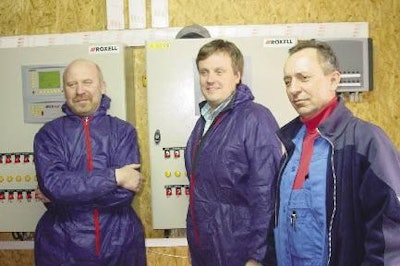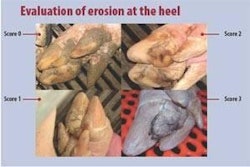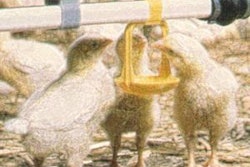
An open-door event held in Lithuania last year featured feeding equipment updates for a 3500-sow production unit belonging to one of the country's largest privately-owned agricultural product companies.
Out of about 66 000 pigs per year produced by the Sidabra farming subsidiary of Lithuanian agri-group Litagra, some 600 each week are transported as weaners to another Sidabra site for finishing. The rest stay on the farrow-to-finish unit until a market weight of 105kg. Half of them are sold domestically to the largest processor in Lithuania, with the other 50% exported to Russia and Latvia.
The finishing complex has places for 13 600 pigs, in 16 houses of 850 pig-places each. For Sidabra's general manager Gintautas Ulvydas and his team, a target of the latest updates at the complex has been to improve control over the feeding process through automation and so reduce time to market. Automated control has provided a feed curve using 3 types of diet and a transition phase, with accurate recording of the daily and total consumption of feeds per all-in/all-out house.
Random samples weighed
Every month some pigs are chosen at random for weighing to find the average pig weight per house. This supports a calculation of average daily gain and feed efficiency for the month, again on the per-house basis. Adjustments in feeding management can then be made as required.
The 3 feeds used in growing-finishing from 30kg to 105kg are supplied by a Litagra group mill. On the unit, the change from one feed type to another for each batch of pigs is done gradually over a transition period of 10 days. The ability to work with different types of feed and with transition periods was one of the requirements specified for the new feeding system when it was purchased from Roxell. Other stipulations were the opportunity to fully automate and the easy recovery of data such as on feed use and growth rate for their later analysis.
Twin tracks for transport
From their storage after arrival in 4 silos of 25 tons capacity, feeds are distributed to the pigs via a pair of Roxell Multifast computer-controlled systems. Providing 2 identical networks for feed transport to the total complex has met the need for a high delivery rate while allowing Sidabra to feed faster and leaving some buffer for possible future extensions. Each distribution system takes about 3.5 hours daily to send a total of 11 tons of feed to 8 houses. The installation has also saved labour, with one person now taking care of the finishing houses where 6 people had been required before the automation.
Each transport line includes its own weigher-mixer supplying 3 flexible centre-less augers that are 120 metres long. An automatic outlet for each house brings feed into a day-bin of 1.5 m³ volume from which the ad lib feeders in the house are filled by a chain-disc conveyor. A sensor beneath each bin means the controller can detect when it is empty and respond, first by checking the growth curve to know what type of feed is needed for that day. With the check completed, it sends another 600kg (in separate batches of 60kg) to re-fill the silo.
Scanning of the storage status in the day-bins takes place daily between the hours of 05:00 and 23:00. A bin found to be empty during that time is re-filled immediately; any silo that becomes empty outside those hours is filled again the following morning. There is also a sensor on the end of the disc-conveyor tube. This one, fitted after the last outlet, stops the feed transport to the feeders automatically as soon as all are filled. PIGI
(With acknowledgement to Stefaan Bekaert of Roxell nv, Belgium, for assistance in preparing this report)
















